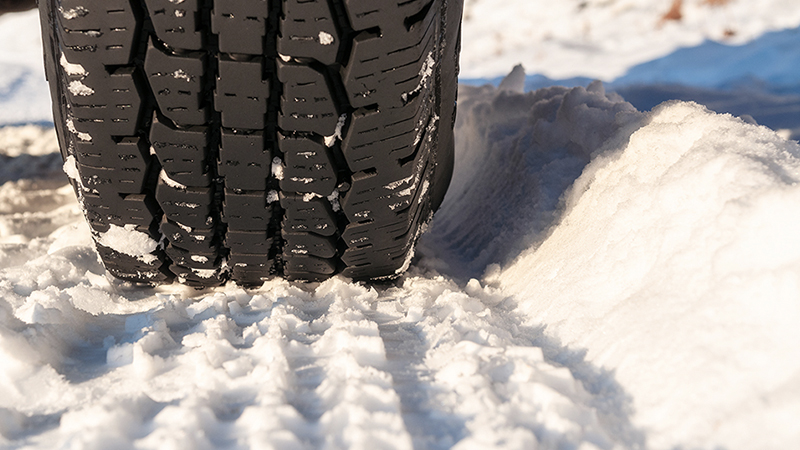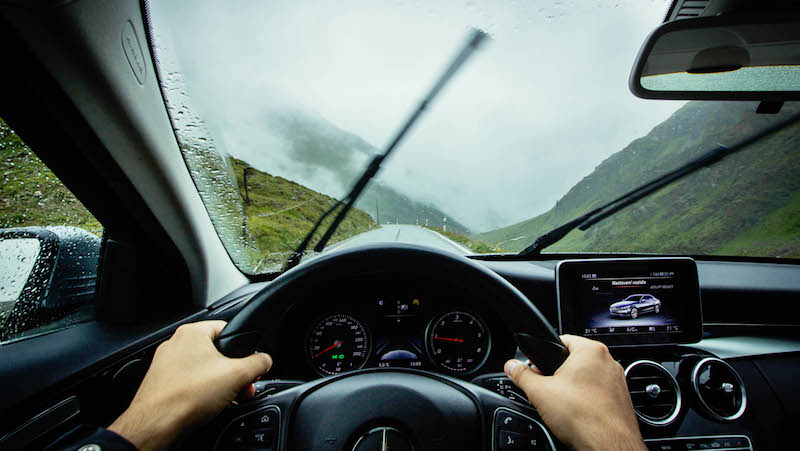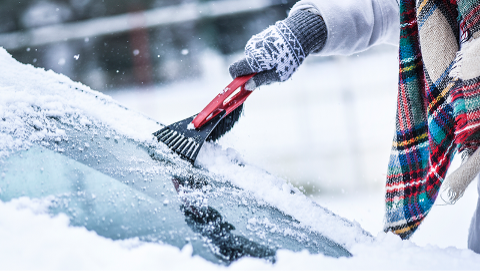Winter brings cold, snow, and long, dark nights — the perfect recipe for messy road conditions. While the best advice in the worst of weather is to stay home by the fire and drink some hot chocolate, we know that isn't always possible. If, you know, you have to get to work or buy groceries, here are a few simple guidelines to make sure you're safely driving in snow.

Defensive driving
According to the U.S. Department of Transportation, 17% of all vehicle accidents happen in winter driving conditions. It's a good idea to to remind yourself of these tips before getting behind the wheel:
- Slow down and go easy on the brakes. Quick or panic braking may cause the wheels to lock, causing a skid. Gentle on-and-off use of brakes allows the tires to grip.
- Stay alert. Don't drive when tired or otherwise impaired.
- Use your headlights. Even if you can see just fine, it's more important that other drivers can see you.
- Keep a safe distance. Leave room between your car and the vehicle ahead of you.
- Use the middle lane. You'll avoid slush on the roadside
- Follow tracks. Take advantage of the tracks in the snow made by other vehicles
- Take care on bridges. They freeze faster than roadways and can be icy.
Finally, use extra caution at nighttime. 49% of fatal accidents occur after dark.
De-icing and snow removal
Visibility is always important, especially in bad weather. Sheets of snow and ice on your car can break loose as your vehicle warms, obscuring your view. So take the time to remove accumulation from your vehicle's hood, roof, windshield and windows before you hit the road. If you don't have the luxury of parking your vehicle in a garage, here a few tried-and-true methods for removing snow and ice.
I'm-in-no-hurry method: Turn front and rear defrosters on high. After 10-15 minutes, use a snow brush or other snow removal tool to remove snow and ice.
I'm-running-late method: After turning on your defrosters, use a de-icer product. They'll melt ice much faster than just a defroster and help reduce dangerous refreeze.
I-need-to-be-there-yesterday method: The night before snow is predicted, cover your windshield with a towel, tarp or sturdy sheet of cardboard. All you have to do is simply remove the cover and store it for next time. Or park with your windshield facing into the sun and hope for a bright day.
Windshield wipers and fluid upkeep
Once your windshield is defrosted and clean, you'll need to keep it that way so the road ahead is clearly visible. Swap out your windshield fluid for an all-weather windshield washer fluid that resists freezing and helps clear road spray more easily. You'll also want to check your front and rear windshield wipers. At the first signs of cracking, splitting or streaking, replace them with a new pair.
New, clean headlights
In addition to driving with more awareness during the evening hours, headlights can go a long way in helping you avoid accidents. Changing out your old halogen headlights for newer models can provide 30% brighter light and up to 25% more down-road visibility. You'll spot obstacles or hazardous road conditions more quickly, which gives you more time to react and improves your odds of avoiding an accident.
You can replace your headlights in less than an hour. If, however, you find that your headlights or taillights are still foggy or dim, you may also want to consider cleaning your headlights with one of a few simple methods.
Tire options
Tires are where the rubber meets the road when it comes to avoiding accidents in winter. Pay attention to tread depth with this handy tool and replace your tires as needed. Here are a few options for improving traction on wintery roads.
Snow tires
If you live in an area that sees frequent or heavy snow fall, then you probably already own a set of snow tires. Tire makers optimize their tire and tread compounds based on what type of tire they’re building. With snow tires, the tire’s rubber and chemical compounds are designed for maximum performance in freezing temperatures and on ice and snow. In addition to rubber compounds that are designed for winter performance, these winter or snow tires also feature tread designs that maximize stopping and steering ability on snow, slush and ice. Snow tires are more expensive than regular tires, and, more often than not, the manufacturers recommend mounting them on separate rims.
Snow tires with studs
For areas where ice-covered roads or packed-snow conditions dominate the winter travel season, drivers might want to consider using snow tires with studs. The studs are metal pins that protrude from the surface of the snow tires and “bite” into ice and packed snow. Studs are noisy on dry roads, however, and performance and handling can suffer.
Tire chains
If snow is an occasional happening in your area and you frequently see ice, consider investing in a pair of tire chains. Sized to fit your vehicle’s tires, you install tire chains without raising the vehicle or even moving it, making them an excellent resource to keep in the vehicle and install when bad weather strikes. Remove tire chains as soon as you're out of the snow and ice, as they limit your top speed and can damage the road surface.
Perhaps the best advice of all for driving during winter weather is to slow down. Clean windshields and snow tires are not an excuse for driving too fast on bad roads. So take your time — the hot cocoa will be waiting when you get back. Do you have winter driving tips to share? Leave a comment.









